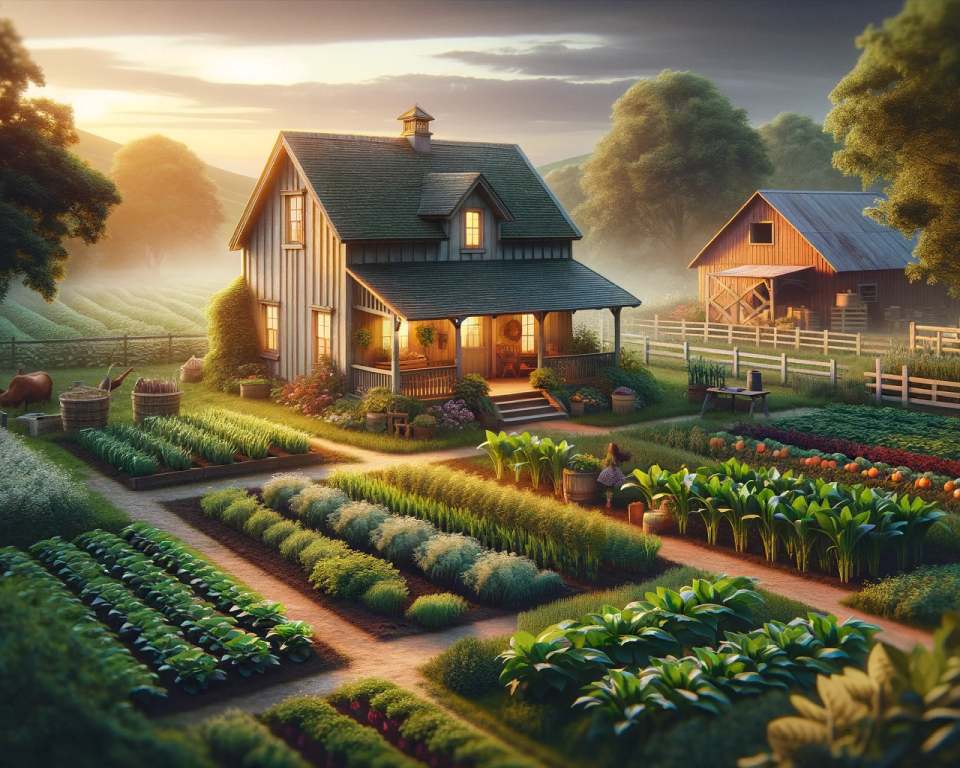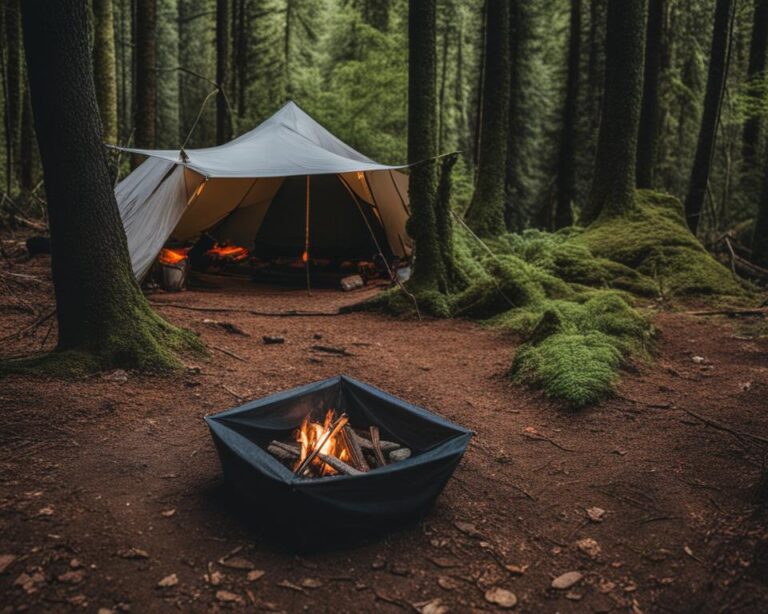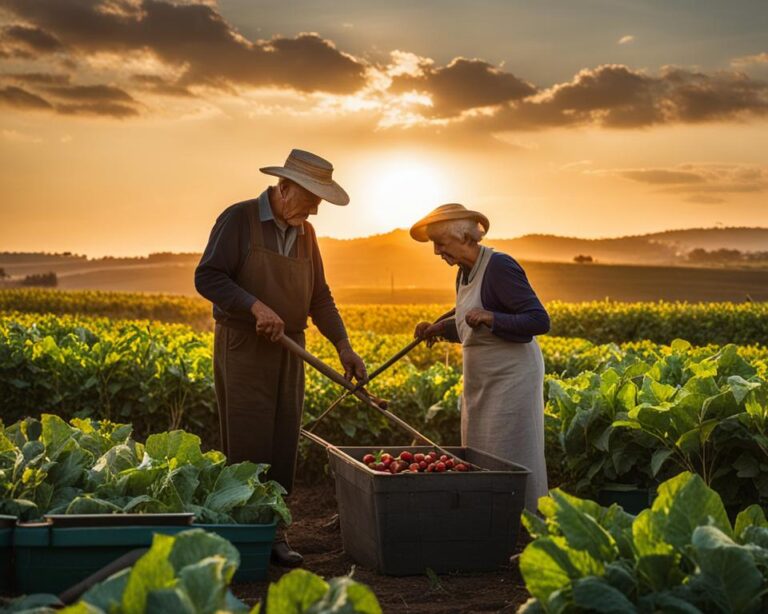Homesteading Essentials: Costs and Initial Investments
Welcome to our comprehensive guide on homesteading costs and initial investments. Homesteading can be a fulfilling and rewarding journey towards self-sufficiency and sustainable living. However, it’s essential to understand the financial aspects and plan accordingly to make it a reality. In this article, we’ll break down the various expenses involved in homesteading and provide cost-saving tips to help you achieve affordable homesteading.
From setting up your homestead to establishing necessary structures, acquiring livestock, and developing gardens, there are several aspects to consider when it comes to homesteading costs. We’ll explore the overall cost and learning curve associated with starting a homestead, giving you a clear understanding of what to expect in terms of initial investments.
Furthermore, we’ll provide a detailed breakdown of homesteading costs, including factors such as land purchase, construction, equipment, livestock, and more. This breakdown will help you create a comprehensive budget and prioritize your financial planning for a successful homesteading journey.
But don’t worry, we won’t just focus on the expenses. We’ll also share strategies for cost-saving in homesteading, offering practical tips on how to make the most of your resources, embrace a frugal mindset, and prioritize needs over wants. With our cost-saving techniques, you can make homesteading more accessible and affordable.
When it comes to homesteading, taking a strategic approach to costs is crucial. We’ll discuss the importance of financial planning, startup costs analysis, and long-term financial sustainability. By understanding and analyzing the costs involved, you can make informed decisions and ensure a sustainable homesteading journey.
As with any endeavor, adjustments may need to be made along the way. We’ll explore the importance of managing expectations, being flexible in budgeting, and making necessary cost adjustments to adapt to the challenges and changes that may arise in your homesteading journey.
Homesteading is not just about the expenses; it’s about hard work, resourcefulness, and the joy of self-sufficiency. We’ll highlight the value of hands-on work, the satisfaction that comes from reusing and repurposing materials, and how a do-it-yourself approach can make homesteading more fulfilling and rewarding.
Additionally, we’ll delve into the long-term goals and growth opportunities in homesteading. Setting goals and investing in the expansion of your homestead will not only enhance your self-sufficiency but also provide a sense of accomplishment and pride as you watch your land and lifestyle thrive over time.
Finally, we’ll explore the rewards of homesteading. Living a self-sufficient lifestyle brings a unique set of joys, benefits, and personal fulfillment. From being connected to nature and the land to the satisfaction of providing for yourself and your loved ones, the rewards of homesteading are truly worth the investment.
Stay tuned as we dive deep into the fascinating world of homesteading costs, tips for budgeting, and strategies for a sustainable and fulfilling homesteading experience.
The Cost of Homesteading
Setting up a homestead can be an exciting and fulfilling journey, but it’s crucial to understand the financial implications. The initial start-up cost of homesteading can be significant, and it’s important to have a clear understanding of the expenses involved to effectively plan and budget for your homestead.
One of the key factors to consider is the learning curve associated with homesteading. Whether you’re new to the lifestyle or have some experience, there will always be new skills to acquire and challenges to overcome. Embracing this learning curve is essential to ensure the success and sustainability of your homestead.
When setting up a homestead, the costs will vary depending on individual circumstances and factors such as location, size of the property, and the extent of improvements needed. Common expenses include purchasing land, building or renovating a home, setting up barns and henhouses, acquiring necessary equipment like tractors and tools, creating vegetable gardens, and raising livestock.

“Homesteading is a journey that requires dedication, resilience, and a willingness to invest not only financially but also emotionally and physically. It may seem daunting at first, but the rewards are immeasurable.”
It’s also important to consider the ongoing costs of maintaining and expanding your homestead. This can include expenses for animal feed, veterinary care, seeds, fertilizers, and ongoing repairs and maintenance. The key is to have a holistic understanding of the costs involved and to integrate them into your long-term financial planning.
While the cost of homesteading may seem daunting, there are ways to minimize expenses and make it more affordable. From opting for cost-saving measures such as DIY projects and repurposing materials to prioritizing needs over wants, there are numerous strategies to help you save money on your homesteading journey.
Before embarking on your homesteading adventure, take the time to thoroughly research and understand the expenses involved. By having a clear idea of the financial commitments, setting realistic goals, and taking a proactive approach to cost-saving, you can ensure a successful and sustainable homesteading experience.
Breakdown of Homesteading Costs
When it comes to embarking on a homesteading journey, understanding the breakdown of costs is crucial for effective planning and budgeting. Homesteading costs can be divided into various categories, each representing an essential aspect of establishing a self-sufficient lifestyle.
Land
The first and most significant expense is the purchase of land. Land prices can vary depending on location, size, and proximity to urban areas. It’s essential to research and evaluate different options to find the right piece of land that meets your needs and budget. Investing in good-quality land is crucial for the success of your homesteading venture.
Home
Constructing a home on your homestead is another significant expenditure. Your home should be designed to accommodate your family’s needs while aligning with your sustainable living goals. The type and size of the home, as well as the choice of materials and construction methods, will impact your overall costs.
Barn and Henhouse
Raising livestock is a common practice in homesteading. Constructing barns and henhouses to provide shelter and protection for your animals is essential. The cost of building these structures will depend on their size, materials used, and any additional features or amenities.
Tractor and Tractor Implements
A tractor is a valuable asset for any homestead, helping with a wide range of tasks like tilling the soil, hauling materials, and maintaining pastures. Investing in a reliable tractor and necessary implements will contribute to the efficiency and productivity of your homestead.
Army Surplus Trailer
An army surplus trailer can be a versatile addition to your homestead. It can be used for transporting materials, storing equipment, or even converted into a mobile workspace. The cost of an army surplus trailer will depend on its size, condition, and any modifications you may need to make.
Rabbit Pens, Meat Chicken Coop, and Pig Pen
If you plan to raise rabbits, chickens for meat, or pigs, building suitable pens and coops is necessary. These structures should provide comfort, security, and ease of access for tending to the animals. The size and materials used will influence the overall cost.
Vegetable Garden
A thriving vegetable garden is an integral part of a homestead. Costs include preparing the soil, purchasing seeds or seedlings, installing irrigation systems, and acquiring necessary gardening tools. The size of the garden and the variety of crops you wish to grow will impact your expenses.
Homestead Additions
As your homestead grows, you may need to incorporate additional structures or infrastructure. This could include items such as a greenhouse, irrigation systems, composting facilities, or solar panels. The costs for these additional homestead additions will vary depending on their complexity and scale.
Tools
Homesteading requires a range of tools for various tasks, from gardening to livestock care and maintenance. These tools include shovels, rakes, hammers, saws, and more. Investing in quality tools ensures their longevity and supports the efficient operation of your homestead.
Bees
If you’re interested in beekeeping, establishing and maintaining beehives will be an additional expense. Costs include purchasing starter colonies, hive equipment, protective clothing, and tools necessary for beekeeping tasks. Beekeeping can offer numerous benefits, including honey production and pollination services.
Pasture and Alpacas
For those looking to raise alpacas, creating suitable pasture areas is essential. The cost will include fencing, pasture preparation, and any additional structures needed for shelter and feeding. Additionally, acquiring alpacas themselves will contribute to the overall expenses, considering the purchase cost and ongoing care.
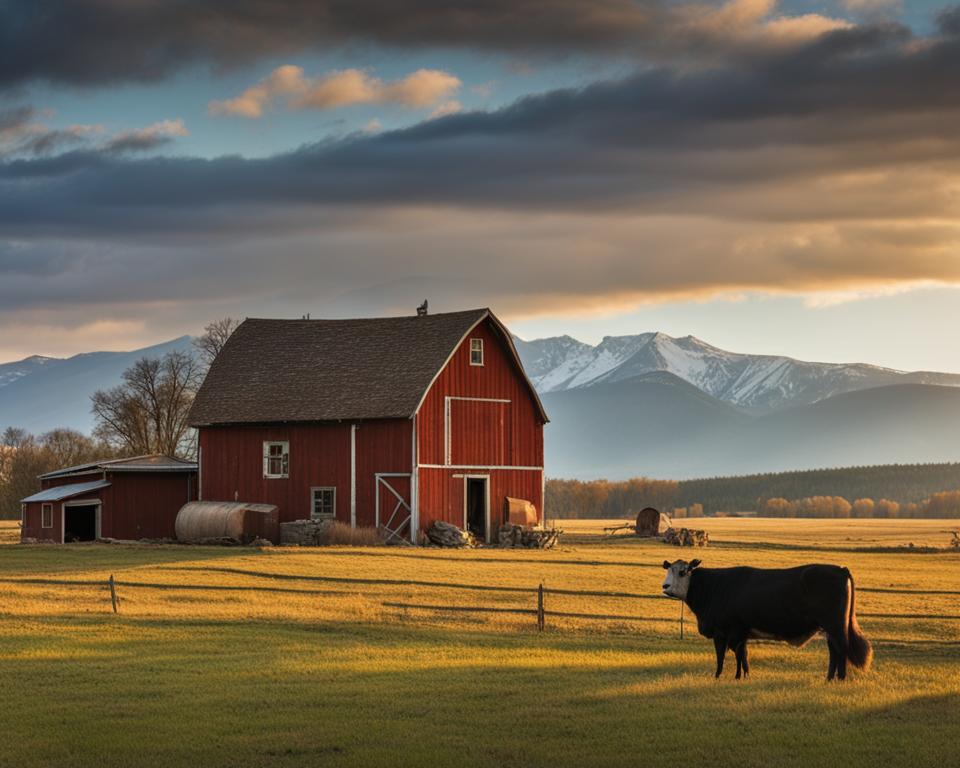
By understanding the breakdown of homesteading costs, you can make informed decisions and prioritize your investments effectively. It’s important to remember that individual circumstances and preferences can greatly influence the total expenses. Throughout this article, we will provide insights and tips for cost-saving opportunities, ensuring that homesteading remains an affordable and rewarding endeavor.
Strategies for Cost-Saving in Homesteading
Homesteading can be a fulfilling and self-sufficient lifestyle, but it can also come with significant costs. However, with careful planning and smart choices, you can make homesteading more affordable without compromising on your goals. Here are some cost-saving strategies to help you homestead on a budget:
1. Embrace DIY Projects
One of the best ways to save money on your homestead is by embracing do-it-yourself (DIY) projects. Whether it’s building your own chicken coop, constructing raised beds for your garden, or repairing fences, DIY projects can save you a considerable amount of money. Not only will you save on labor costs, but you’ll also have the satisfaction of knowing you built something with your own hands.
2. Recycle and Reuse Materials
Another way to cut costs in homesteading is by recycling and reusing materials. Instead of purchasing new items, look for opportunities to repurpose existing materials. For example, you can use old pallets to build a compost bin or repurpose containers as planters. By being resourceful and creative, you can significantly reduce your expenses.
3. Prioritize Needs Over Wants
When planning your homestead, it’s essential to prioritize your needs over your wants. Focus on the essentials that will help you achieve self-sufficiency and sustainability, and postpone or eliminate unnecessary purchases. By distinguishing between needs and wants, you can allocate your resources more effectively and avoid unnecessary expenses.
4. Start Small and Expand Gradually
Homesteading doesn’t have to happen all at once. Start small by focusing on a few key areas, such as growing vegetables or raising backyard chickens. As you gain experience and resources, expand your homestead gradually. This allows you to spread out costs over time and gives you the opportunity to learn and adjust along the way.
5. Join Homesteading Communities
Joining homesteading communities can be an excellent way to save money. By connecting with like-minded individuals, you can share resources, experiences, and even equipment. Join local homesteading groups or online forums to find opportunities to collaborate, trade, or borrow tools and materials. By working together, you can reduce individual costs and build a supportive network.
Remember, frugal homesteading is all about making intentional choices, being resourceful, and prioritizing your goals. By implementing these cost-saving strategies, you can make your homesteading journey more affordable and sustainable, bringing you closer to a self-sufficient and fulfilling way of life.
Taking a Strategic Approach to Homesteading Costs
When embarking on a homesteading journey, taking a strategic approach to managing costs is crucial. By diligently planning and analyzing the expenses involved, you can ensure the long-term financial sustainability of your homestead. Let’s delve into some key considerations and strategies for effectively managing homesteading costs.
Homesteading Financial Planning
Financial planning is the foundation of any successful homesteading venture. It involves assessing your current financial situation, setting realistic goals, and creating a budget that aligns with your vision. By having a clear understanding of your income and expenses, you can make informed decisions about the investments you need to make and prioritize your spending accordingly.
Consider engaging the services of a financial advisor who specializes in homesteading to help you create a comprehensive financial plan. They can guide you in making sound financial decisions, maximizing your resources, and identifying potential pitfalls that may impact your long-term financial stability.
Homesteading Startup Costs
Homesteading startup costs can vary depending on the scale and scope of your project. It is important to thoroughly research and assess the expenses involved in acquiring land, constructing or renovating buildings, purchasing equipment, and acquiring livestock and seeds. By understanding the upfront investment required, you can plan accordingly and avoid any unexpected financial burden.
Homesteading Cost Analysis
Analyze the costs associated with each aspect of your homesteading project. This includes identifying the primary expenses related to land purchase and development, building construction or renovation, infrastructure establishment, and the procurement of necessary tools and equipment. Conducting a detailed homesteading cost analysis will give you a clearer picture of your financial obligations, allowing you to make informed decisions and prioritize your investments.
Financial Considerations for Homesteading
When considering the financial aspects of homesteading, it is important to not only focus on the immediate costs but also the long-term financial sustainability. Take into account ongoing expenses such as maintenance, utilities, and taxes, as well as potential sources of income from products you generate on your homestead.
Furthermore, consider incorporating sustainable and cost-saving practices into your homesteading lifestyle. These may include implementing energy-efficient systems, efficient water management, composting, and reducing waste. By adopting these practices, you can not only lower your environmental impact but also save money in the long run.
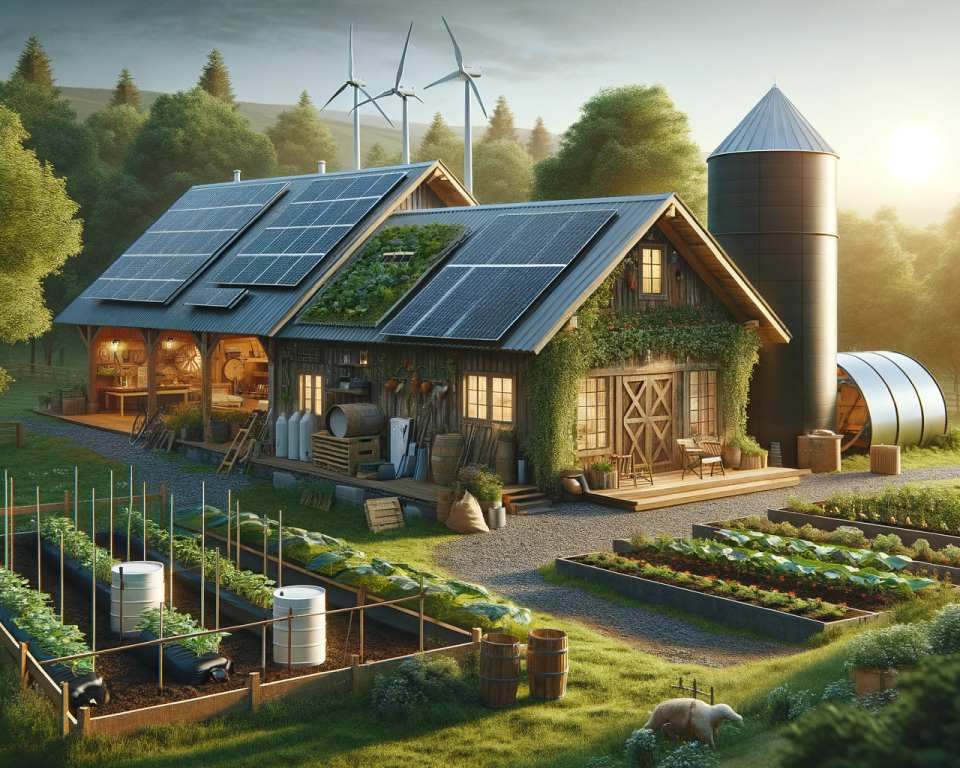
By taking a strategic approach to homesteading costs, you can ensure that your financial resources are utilized wisely and that your homestead thrives both in the short term and in the years to come. Financial planning, cost analysis, and considering the long-term financial sustainability are all essential components of a successful homesteading journey.
Realistic Expectations and Adjustments in Homesteading Costs
When it comes to homesteading, it’s important to manage our expectations and be prepared for adjustments along the way. The costs involved in establishing and maintaining a homestead can often exceed our initial projections. However, with realistic budgeting and the flexibility to make necessary adjustments, we can achieve a sustainable and successful homesteading lifestyle.
Managing our homesteading expectations involves understanding that the journey may not always go as planned. From unexpected repairs to fluctuating market prices, there are various factors that can impact our homesteading costs. By remaining open-minded and adaptable, we can navigate these challenges with ease.
One key aspect of managing expectations is realistic budgeting for homesteading. It’s crucial to create a detailed budget that covers all aspects of our homesteading venture, including land acquisition, construction, livestock, tools, and ongoing maintenance. This allows us to have a clear understanding of our financial commitments and avoid any financial surprises along the way.
“Homesteading costs can be unpredictable, and it’s crucial to have enough flexibility in our budget to make adjustments as necessary. By setting aside a contingency fund or exploring cost-saving strategies, we can ensure that we have the financial resources to handle unforeseen expenses.”
Another important aspect is the ability to make adjustments as needed. As we progress in our homesteading journey, we may encounter situations that require us to reassess our budget and make necessary changes. This could involve prioritizing certain projects over others, exploring cost-saving strategies, or finding creative ways to repurpose materials and resources.
Adjusting homesteading costs is not a sign of failure but rather a testament to our ability to adapt and find solutions. It allows us to navigate the challenges and ensure the long-term sustainability of our homestead. With proper planning and open communication, we can make informed decisions and adjust our budget accordingly.
Key Takeaways:
- Managing homesteading expectations is important to navigate the financial challenges and uncertainties that may arise.
- Realistic budgeting helps us prepare for the costs involved in homesteading and avoid financial surprises.
- Being flexible and making necessary adjustments in our budget allows us to overcome unforeseen expenses and ensure the sustainability of our homestead.
The Value of Hard Work and “Making Do” in Homesteading
Homesteading is a journey that requires dedication, perseverance, and a strong work ethic. It is a lifestyle that encompasses hard work, resourcefulness, and the ability to “make do” with what you have. In the world of homesteading, these qualities are not just valued—they are essential.
Hard work is at the core of homesteading. From dawn till dusk, there is always something to be done, whether it’s tending to animals, maintaining the garden, or repairing and building structures. The physical labor involved in homesteading is demanding, but it is also incredibly rewarding. There is a sense of pride that comes from knowing that you are providing for yourself and your family through your own sweat and determination.
Resourcefulness is another vital trait in the world of homesteading. It means finding creative solutions and making the most out of the resources available to you. When faced with a problem or a shortage, homesteaders don’t simply give up—they get resourceful. They repurpose materials, recycle, and find innovative ways to solve challenges. Resourcefulness not only saves money but also fosters a sense of self-sufficiency and resilience.
Reusing and Repurposing Materials
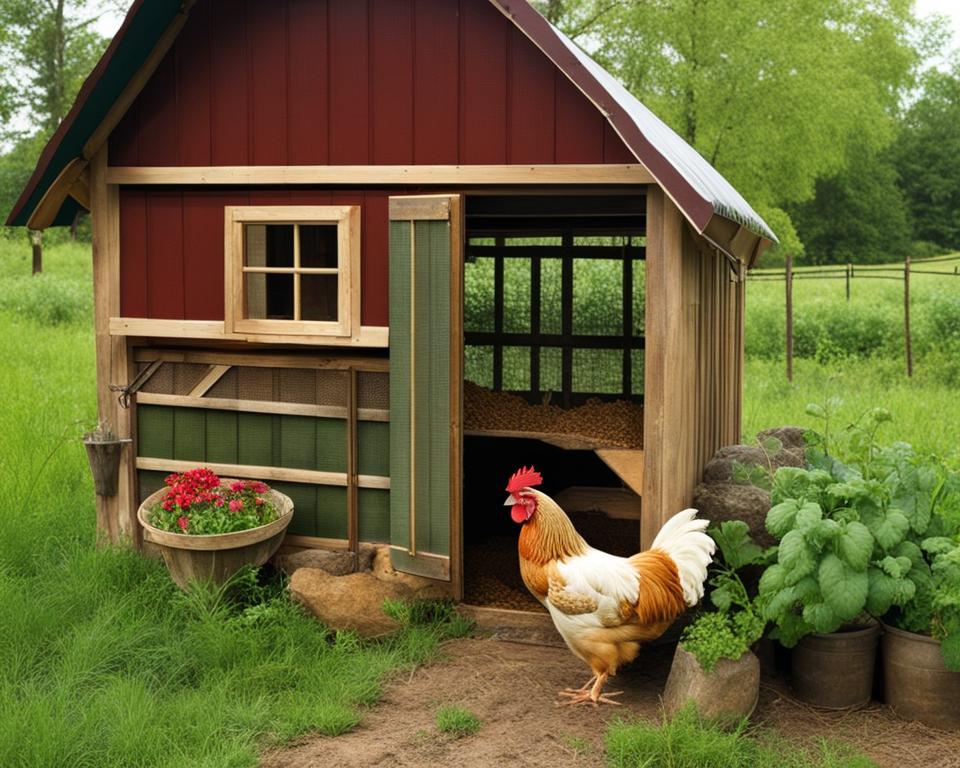
One of the hallmarks of homesteading is the practice of reusing and repurposing materials. Nothing goes to waste on the homestead. Old barn wood becomes a rustic dining table, mason jars find new life as storage containers, and worn-out clothing is transformed into quilts or patchwork projects.
“Resourcefulness is the ability to see beauty and potential in things that others may overlook.”
By reusing and repurposing materials, homesteaders not only save money but also reduce their impact on the environment. It is a way of honoring the resources they have and finding beauty and value in the old and discarded.
The Joy of DIY
One of the greatest joys of homesteading is taking on do-it-yourself (DIY) projects. Whether it’s building a chicken coop, constructing raised beds for the garden, or fixing a broken fence, the satisfaction that comes from completing a project with your own two hands is unparalleled.
DIY projects not only save money but also allow homesteaders to customize and adapt their spaces to suit their needs. It’s a chance to learn new skills, unleash creativity, and truly make the homestead their own.
The Power of Self-Sufficiency
Homesteading is rooted in self-sufficiency. The ability to produce your own food, generate your own energy, and rely on your own skills is empowering. It gives homesteaders a sense of freedom and independence, knowing that they are not at the mercy of external systems or circumstances.
Being self-sufficient means being able to provide for yourself and your family even when resources may be scarce or inaccessible. By embracing the value of hard work and “making do,” homesteaders are able to thrive in any situation and adapt to the challenges that come their way.
In conclusion, the value of hard work and resourcefulness cannot be overstated in the world of homesteading. These qualities not only help homesteaders save money and reduce waste but also foster a deep sense of satisfaction and resilience. So, roll up your sleeves, embrace the joy of reusing and repurposing materials, and discover the rewards that come from the DIY spirit and self-sufficiency in homesteading.
Long-Term Homesteading Goals and Growth
Homesteading is a lifestyle that extends far beyond the present moment. It is a journey of growth, self-sufficiency, and connection to the land. As homesteaders, we understand the importance of setting long-term goals and investing in the growth of our homesteads for a sustainable and fulfilling future.
One of the key aspects of long-term homesteading goals is homestead expansion. Whether it’s acquiring more land, building additional structures, or increasing the capacity of our livestock and crops, expanding our homestead allows us to meet growing needs and ambitions. This expansion enables us to cultivate a thriving and resilient homestead that can support our desired lifestyle and future generations.
Investing in homestead growth is not only about physical expansion but also about building upon our knowledge, skills, and resources. It means continuously learning and embracing new techniques and technologies that can enhance our self-sufficiency and productivity. From implementing sustainable farming practices to exploring innovative ways to generate renewable energy, investing in growth ensures that our homesteads remain relevant and adaptable in an ever-changing world.
Planning for the future in homesteading is essential for long-term success. It involves envisioning the kind of homestead we want to create and mapping out the steps needed to achieve our vision. This includes financial planning, setting milestones, and establishing a timeline for our goals. By outlining our objectives and breaking them down into actionable tasks, we can make steady progress towards our long-term homesteading goals.
As homesteaders, we are stewards of the land and caretakers of a way of life that transcends generations. We have the unique opportunity to leave a lasting legacy, not only in the physical structures we build and the resources we develop but also in the values and skills we pass down to future homesteaders. Long-term homesteading goals and growth ensure that this legacy is one of abundance, resilience, and sustainability.
In conclusion, long-term homesteading goals provide a roadmap for the future. They guide our decisions, motivate our actions, and ensure that our homesteads continue to thrive and evolve. Through homestead expansion, investing in growth, and planning for the future, we create a sustainable and fulfilling lifestyle that brings us closer to nature and the bounty it offers.
The Rewards of Homesteading
Homesteading may come with its fair share of challenges and costs, but the rewards and benefits that accompany this self-sufficient lifestyle are truly remarkable. The joys of homesteading go beyond just living off the land; it’s about finding personal fulfillment in hard work and self-reliance.
One of the greatest rewards of homesteading is the ability to embrace a simpler way of life and be intimately connected to nature and the land. Spending time outdoors, working the soil, planting and harvesting crops, and tending to animals not only nourishes our bodies but also our souls. There is a certain peace and contentment that comes from living in harmony with the seasons and witnessing the beauty of nature firsthand.

Aside from the inherent connection to nature, homesteading brings a sense of accomplishment and pride. Each meal we prepare with the fruits of our labor is a testament to our hard work and dedication. From planting seeds to nurturing livestock, there is a deep satisfaction in knowing that we have provided for ourselves and our loved ones through our own efforts.
Beyond the personal fulfillment, homesteading offers numerous other benefits. It allows us to escape the stresses of modern life and find solace in the simplicity of self-sufficiency. It provides the opportunity to develop practical skills such as gardening, animal husbandry, and DIY projects, which can be empowering and valuable in today’s uncertain world. Additionally, homesteading promotes a healthier lifestyle, with access to fresh, organic produce, and the ability to control what goes into our food.
FAQ
What are the costs and initial investments required for homesteading?
Homesteading requires significant initial investments, including the purchase of land, construction of a home, establishment of structures like barns and henhouses, acquiring livestock and tools, and developing gardens and pastures.
How much does it cost to set up a homestead?
The cost of setting up a homestead can vary depending on factors such as location and the extent of improvements needed. It is important to budget for land purchase, construction costs, infrastructure development, and the acquisition of livestock and tools.
What are the breakdown costs of homesteading?
The costs of homesteading can be broken down into various aspects, including land purchase, home construction, barns and henhouses, livestock and tools, and the development of gardens and pastures.
Are there any strategies for saving money in homesteading?
Yes, there are several strategies for saving money in homesteading. Some tips include taking on DIY projects, recycling and reusing materials, and prioritizing needs over wants.
How important is financial planning in homesteading?
Financial planning is crucial in homesteading to ensure a sustainable and successful venture. It involves analyzing costs, prioritizing investments, and considering long-term financial sustainability.
What should I do if homesteading costs exceed my expectations?
If homesteading costs exceed your expectations, it is important to manage your expectations, be flexible in budgeting, and make necessary adjustments to your expenses to achieve a sustainable homesteading lifestyle.
What is the value of hard work and resourcefulness in homesteading?
Hard work and resourcefulness are integral to homesteading. The hands-on nature of homesteading allows for reusing and repurposing materials, which can save money and create a sense of self-sufficiency and resourcefulness.
Should I have long-term goals for my homestead?
Yes, long-term goals are important for homesteading. They can guide your investments, help you plan for the expansion of your homestead, and provide a sense of fulfillment as you see your land and lifestyle thrive over time.
What are the rewards of homesteading?
Homesteading offers numerous rewards, including the joys of living a self-sufficient lifestyle, personal fulfillment from hard work and self-reliance, and a deeper connection to nature and the land.

